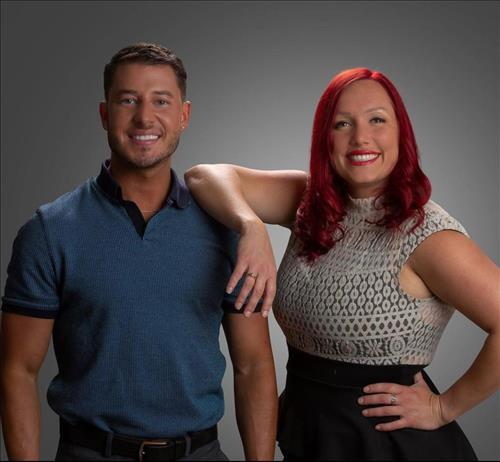Buying an Unfinished Home: Understanding the Process
Purchasing real estate is a process that looks different for everyone. Some people have their sights set on a pre-construction, new-build, or custom home, while others opt for resale homes. In between all these real estate types, you’ll find unfinished homes. As the name suggests, these are properties partially completed when they’re put up for sale.
There are many reasons a home might be put up for sale midway through construction. Lack of funds and life events such as marital separation, illness, injury, or death, are some of the reasons why a homeowner may not be able to finish building their property. These half-constructed properties can give people the opportunity to create their dream homes without having to start completely from scratch.
Still, it’s important to be realistic with your expectations. Not all unfinished homes are equal. Some already have a good structure in place, including all the framing, drywall, and roof. Other homes may still require a significant amount of work, permits and planning, so it’s important to determine if you’re willing to make the financial and time commitment.

1. Work with a REALTOR®
While unfinished homes may seem like a mystery to some people, acquiring them isn’t too different from purchasing a resale home. However, there are some additional elements to consider. According to both Awgu and Ruiter, working with a REALTOR® is crucial as they’ll not only guide you through a typically complicated process, they’ll also make sure you’re protected on all fronts.
“We put the appropriate clauses in the agreement and held it as conditional until all inspections by required contractors were completed,” says Awgu.
The buyer can get the home inspected for any of the permitted work done-to-date to make sure the structure is safe and it hasn’t failed any inspections.
However, every transaction is different when it comes to conditional offers. In Ruiter’s case, their property was a hot commodity and adding too many conditions could mean they could have lost out on the sale. But they didn’t want to buy the home without an inspection. So, Ruiter and her partner visited the half-finished home with contractors and inspectors who were able to check the house, giving them peace of mind before submitting an offer.
“Our REALTOR® made the process of finding our new home so much easier,” recalls Ruiter. “We were able to make decisions about the property very quickly. She gave us advice on the area, how much to offer, whether or not to put conditions, and more. We received the listing for the property on a Thursday and by Saturday we were the new owners.”
We spoke with Lisa Awgu, a REALTOR® and salesperson with RE/MAX Hallmark Realty Group in Ontario, who has helped clients buy unfinished homes, to get expert insights into the process. We also connected with Tanya Ruiter, who recently purchased an unfinished home in Smiths Falls, Ontario, with her partner. She gave us a glimpse into the overall experience from the buyer’s perspective.

2. Explore your funding options
Cost savings is one of the biggest pros of purchasing an unfinished home. But regardless of whether you’re a first-time home buyer or an experienced real estate owner, the requirements for buying an unfinished home are similar. You’ll still need to have a good credit score, proof of stable income, low debt and the required down payment. But there are some major differences.
“The big difference is unfinished homes don’t qualify for a normal mortgage,” explains Awgu. “The nature of the property means you’ll need a construction loan instead. The lender will usually give you the funds in stages, according to your build stages.”
This funding option gives you the ability to finance the remainder of the build. When the construction ends, the loan becomes a standard mortgage.
For Ruiter, who already owned another home, she was able to secure a home equity line of credit to help pay for the construction (this is similar to when a homeowner takes out an equity loan to upgrade their property or finance renovations). But since Ruiter’s new property sits on 136 acres of rural land, the bank needed to use different criteria to evaluate her eligibility for a loan to complete the construction.
“We were lucky to have equity from our previous property and the support of family,” Ruiter explains. “This is one of the biggest financial decisions you’ll make, so be sure to look for a lender who understands your existing financial situation and construction needs. Dealing with mortgage experts who knew what they were talking about made all the difference. They answered all my questions and made it all seem a little less scary.”
Once you’ve got the loan, you should map out the budget you’ll need for various components of the structural build, design, and related fees to avoid any unwelcome surprises when the project is underway.

3. Secure the permits and plans
Confirm the seller has the original architectural plans, permits, and any other relevant documentation. Make sure these are all transferred to you as the new owner before any work begins.
“We make sure all permits are valid and any work done has been approved to qualify for warranty coverage,” said Awgu. “Our main priority is our client, so we do whatever we can to make sure they’re protected and happy with their purchase.” She adds that if you’re in Ontario, you should find out if your property qualifies for Tarion Warranty. Tarion is a non-profit corporation established by the provincial government to protect the rights of new home buyers and regulate the home building industry.
“If you’re taking over a partially built home, you will have to make sure the build so far meets requirements to qualify for this warranty, especially if the intention is to sell after completion,” Awgu continues.
If you’re working with a REALTOR®, contractor, and/or design-builder, they can point you in the right direction, or even get the permits and plans on your behalf.

4. Gather the experts
In addition to your REALTOR®, loan specialist, real estate lawyer, and contractor, you’ll need to consider working with a few other experts to help make your dream home a reality.
As customization is a big pro for finishing the construction on a home, Ruiter chose to work with a design-builder, which she recommends if this option fits within your budget. Design build allows you to combine both the construction and design components of the work under one plan, so your home turns out exactly as envisioned. Not all contractors have design expertise to provide separate floor plans or layout design, so you’ll have to search for one who does or a builder who has this specialization.
As the work progresses, you’ll likely need to work with professionals who are responsible for safety inspections, plumbing, electrical, etc. The contractor or builder will typically be the liaison between the homeowner and these experts. You may also need to get in contact with municipal service providers for utilities like hydro and water to make sure the house is properly connected.
“Regardless of which option you go with, an independent contractor or a design-builder firm, you should make sure their communication and organization style match what you need,” advises Ruiter. “For example, if you’re someone who values regular updates, then you’ll want to work with experts who over-communicate.”

5. Have a plan B
In an ideal world, your property will be move-in ready by your planned date. Unfortunately, one of the cons of taking over the construction of an unfinished home is timelines shift. Many reasons can contribute to delays, including shortage of supplies, construction errors, slow processing of permits, contractor illness or injury, weather, shortage of funds, and more.
“It’s especially important to sort out temporary living arrangements and storage for your things,” says Ruiter. “We sold our old home before the new property was ready. We thought we’d be able to move and finish some of the work after the fact, but we were delayed by a few months and had to make alternative arrangements.”
“You’ll also need to secure a final occupancy permit before you move in,” adds Awgu. “Depending on how much of the home is completed, you may be able to get this permit before the work is completely done.”

6. Prepare to collaborate
Everyone is busy, so it’s understandable you may want to hand over all the plans to the experts. However, your house can only feel like your dream home if you’re involved in the process from start to finish. The contractor and designers will bring options to you based on what you’ve told them you want, but you’ll need to collaborate with them to make decisions.
“Our contractor shopped around for options to recommend to us for fixtures, cabinets, lights, that sort of thing,” explains Ruiter. “But we also looked for things we liked because we wanted specific things like a Jacuzzi tub, a urinal in one of the bathrooms, and a french door fridge. We agreed on a budget with our contractor and then we just went for it.”
Another tip Ruiter learned through this process is if you’re on a budget, some of the work can be done by the homeowner. DIY projects like painting are something you can do if you want to give your wallet a break. Just make sure to communicate any of your DIY plans with your contractor ahead of time.

7. Beware of cost creep
Buying an unfinished house can come with additional costs as the build is in progress. Depending on the stage at which the original owner left the property, contractor recommendations, and the inspection report, you may have to shell out some additional cash to cover certain tasks.
“Beyond the work inside the house, you should also keep in mind the curb appeal of the property,” reminds Awgu. “The way your house looks on the outside is just as important as what you do with the inside.”
Ruiter seconds this advice, adding “you should be prepared to pay for paving, gravel for the driveway, fencing, landscaping, propane testing, painting, and more.”

8. Inject your style
It may feel a bit overwhelming when you try to voice what you want when you’re working with experts. This is why having open communication with the team you’re working with is important. You should be comfortable expressing what you want your customized space to look like, even if it doesn’t align with the vision your contractor or designers have. While they can offer valuable opinions about the way something looks, they’re not the ones who will live in the house.
“Don’t let those you’re working with talk you out of something you want for your house. It’s important to have your style and taste reflected in the design of the house. If you want something quirky, go for it. Dark paint? Why not! You’re paying a lot of money and investing a lot of time to not get exactly what you want,” says Ruiter.

Buying an unfinished home is not for the faint of heart, but it can be extremely rewarding.
“It’s a great compromise for anyone who has dreamed of building their home but has financial constraints,” says Ruiter. “It gave me the chance to own a home that I love every piece of.”
If you’re unsure where to start, you can find a REALTOR® like Awgu, with experience in dealing with unfinished homes, through the REALTOR.ca search. You can start by asking them questions and having them address any of your hesitations. They can also help you access listings so you can get a sense of what options are available to you.



